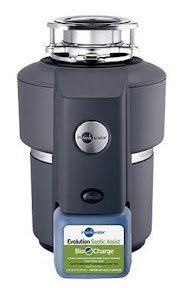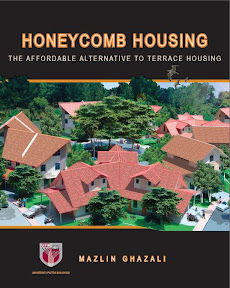ENVIRONMENTAL UPKEEP
Managing Waste Disposal
Disposal of solid waste is a key issue. If garbage disposal is adequately tackled, this will overcome the problems of dirty and unhygienic surroundings that we find now in both shop house area and low-cost neighbourhoods. It can help increase the amounts of garbage that is recycled and so reduce the amount of solid waste that have to be taken to land fills. In all areas that we have surveyed, garbage waiting to be collected, often stinking, is a magnet for stay cats, dogs, rats, flies, cockroaches and other vermin.
The refuse collection and disposal problem is mainly a problem of maintenance and management, yet good architectural planning can help. In the case of the “Kotapuri” shop/apartments, the designs help in several ways: first is the attempt to create a sense of community. Secondly, it includes a strategy on how to collect enough money for ensure adequate maintenance (see below).
Electric Grinders
The third step is to incorporate electric grinders under the kitchen sinks of all apartments and houses (a common practice in America, Australia and Europe) to get rid of food waste at source directly into the main sewer line leading to the local sewerage treatment plant, instead of rotting in the kitchen then stinking the streets. It is estimated that in Malaysia over 40% of household waste is made up of organic food waste that can be dealt with by the sink grinder.
This waste food grinder fits under the sink
The simple removal of digestible organic matter directly into the existing sewer system means the rest of the garbage can be clean and dry, and does not need to be put out everyday.
Reycling
The fourth step is to make recycling of tins, plastic, bottles, newspaper etc. in the home very easy and profitable. Regular and frequent door to door purchase of recycleables at good rates is arranged by the maintenace management with commercial or community groups, perhaps even weekly.
On the other hand, the refuse bin for two or three blocks is located a certain distance away from the flats and shops, not only to avoid it becoming a nuisance to the flats and the commercial premises, but also to make it a bit tiresome for residents to throw their rubbish this way. Thus householders are encouraged to use their grinder, and to clean and put aside recycleables.
In Malaysia today only 5% of waste is recycled. We would be aiming to have 20% of household waste recycled (the average for advanced countries).
Enforcement
Similarly the shop operators will be encouraged to use their heavier-duty electric grinders for organic waste, and to clean and set aside recycleables. Rules for keeping the shop walkway clean and tidy, have to be strictly enforced by the management.
DESIGN FOR MAINTENANCE
Maintenance Fees
Design has an important role in maintenance. Design with durable, low maintenance features help, but the Kotapuri concept goes beyond this: it attempts to create an income generating model that is capable of generating sufficient funds for maintenance.
Without adequate money, good maintenance is impossible. It is a well known fact that existing low-cost housing schemes are poorly maintained. At the same time it is very difficult to collect even RM10 per month from residents. Even if everyone pays, RM10 is only 1.5sen per square foot (psf). Compare this with 26sen psf typically changed by condominiums or 20sen psf by apartments. Insufficient funds lead to a poor state of maintenance, causing residents to refuse to pay even RM 10 per month, leading to a vicious circle spiraling downwards to slumhood.
Each “Kotapuri” shop/apartments block will collect maintenance charges as follows:
MAINTENANCE FEES
In the “Kotapuri” concept, the income from low-cost households is augmented by income from shops; but it is the carparking charges that make up the biggest part of the income for maintenance.
We believe that 8 sen per square foot is a reasonable budget for routine maintenance and contribution to a sinking fund. The maintenance budget can be compared to condominiums and apartments below :
Two or three blocks are managed together providing for a monthly budget of RM 10,880 or RM 16,320.
Providing and Managing the Car Park
From observation, all shophouse type developments which become commercial successes suffer from lack of car parks. More so shop/offices, Here the demand for car parks for office use and for shops occur at the same time, ie., from 9am to 6pm. For shop/apartments, the householders mainly park at night; as for the shops, demand is mainly during the daytime. Here the residential/commercial mix is an advantage.
Low-cost housing also suffers from lack of car-parks. The current standards for car-parking are obviously too low. In Malaysia, the general requirement is 1 car parking space (cps) for every 500sf of shop or office, plus 10%. As for low-cost flats priced below RM45,000, it is 1 cps for every 2 units, plus 10% for visitors.
In the Kotapuri design, this problem is solved by regarding the car parking space as a revenue-center rather than a cost center.
The car park is planned to be run as follows: it is free for residents at night, weekends and public holidays, but during commercial hours 10am to 6pm car parking is charged at 40sen an hour. Assuming 40% occupancy, net collection of 30sen per hour (10¢ for car park operator) and 22 collection days per month. The income per car parking space is RM22 per month.
Residents pay hourly charges or a monthly fee of RM22 to park during the commercial hours. Because the car parks are a revenue centre, it makes sense to build more car parks than the minimum requirement, as shown below:
By the way, this overcomes a key problem with shop/apartments, more so shop/offices: a chronic lack of parking space.
It is shown in the previous section that potential income from car-parks is far higher than what low-cost flat residents are normally charged.


No comments:
Post a Comment